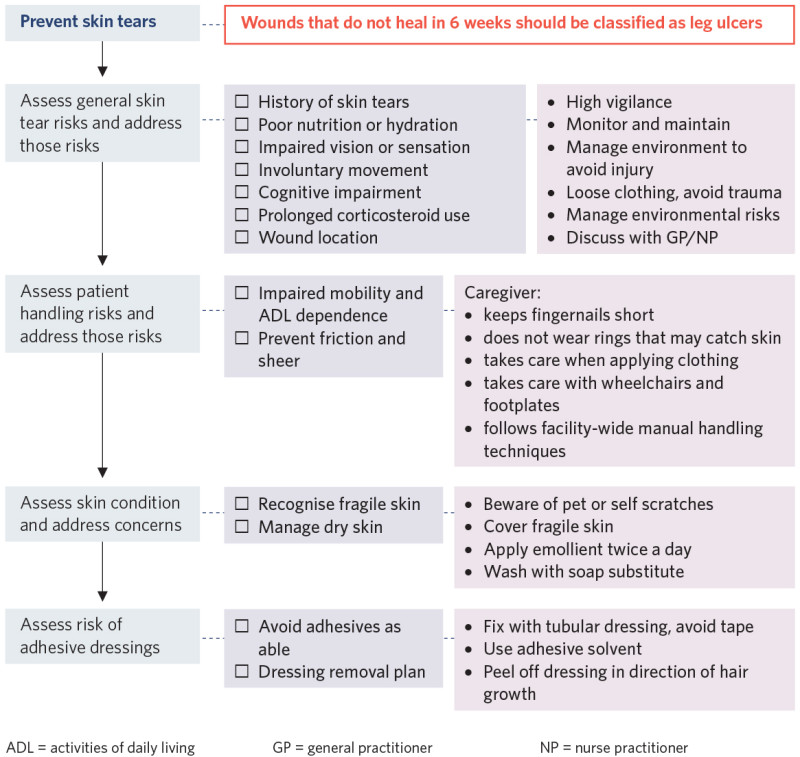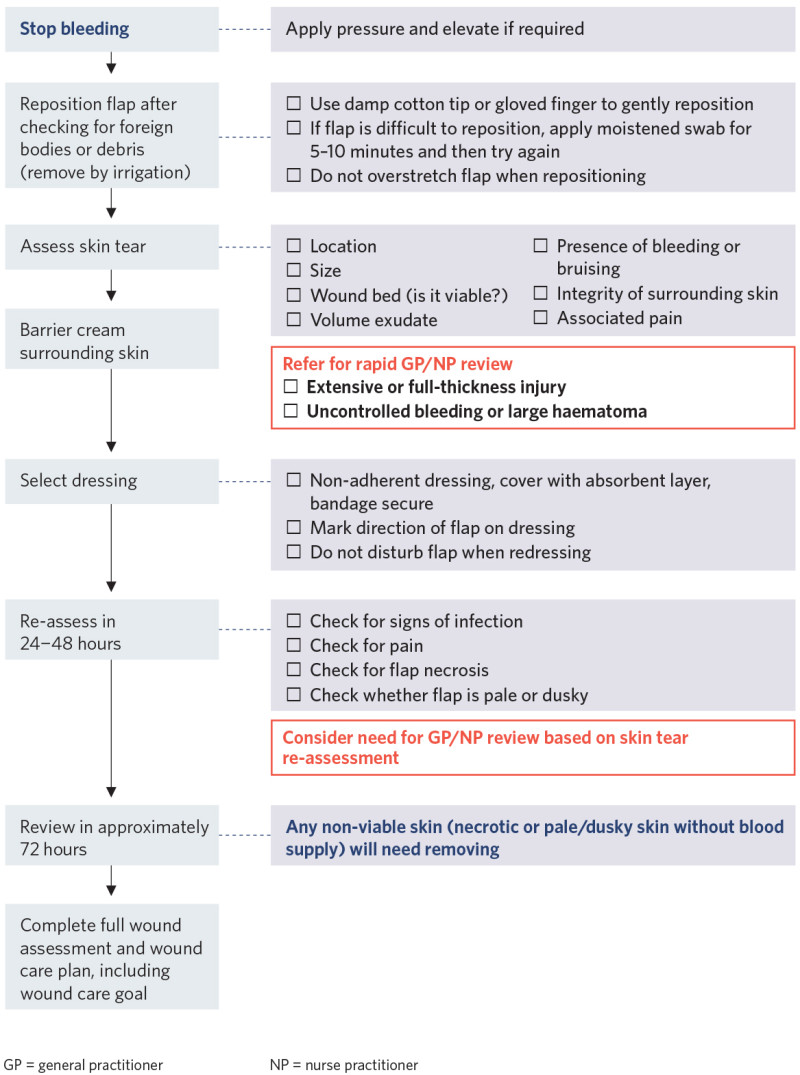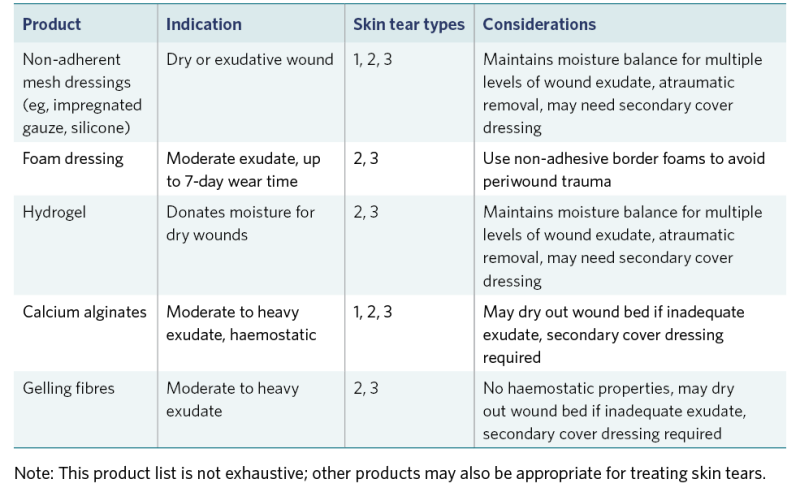To return to the list of all of the Frailty care guides | Ngā aratohu maimoa hauwarea, click here.
Contents
- Definition
- Why this is important
- Implications for kaumātua
- Assessment
- Preventing skin tears
- Treatment
- References | Ngā tohutoro
The information in this guide is accurate to the best of our knowledge as of June 2023.
Definition
Skin tears are traumatic wounds where typically the epidermis separates from the dermis as a result of friction and/or shearing forces. In a full thickness skin tear, both the epidermis and dermis separate from the underlying structures (Carville et al 2007; LeBlanc et al 2011).
Key points
- Due to ageing, the epidermis thins overall and the junction between the dermis and epidermis flattens. This junction becomes more fragile and susceptible to damage from moisture, friction and trauma.
- Loss of sebaceous (oil-secreting) glands makes skin drier and more easily damaged.
- Maintaining skin health and avoiding injury are key to preventing skin tears.
Why this is important
Skin tears are painful, impact on quality of life and can lead to chronic wounds.
Implications for kaumātua*
Skin tears can happen for kaumātua as for all residents. If a skin tear does happen, it is important to give kaumātua and their whānau/family all the information they need to help them participate in treatment and activities to prevent further skin tears. Whānau/family can offer valuable, culturally informed interventions and help to motivate kaumātua to participate in them as they are invested in the outcome for their loved one.
*Kaumātua are individuals, and their connection with culture varies. This guide provides a starting point for a conversation about some key cultural concepts with kaumātua and their whānau/family. It is not an exhaustive list; nor does it apply to every person who identifies as Māori. It remains important to avoid assuming all concepts apply to everyone and to allow care to be person and whānau/family led.
Assessment
Prevent skin tears by assessing and managing risk factors for them, including through general history, patient handling, skin care and use of dressings (sticky tapes and bandaging).
If a skin tear occurs, use a classification system to determine its severity and establish a treatment plan. There are two key classification systems: the STAR (Skin Tear Audit Research) and the ISTAP (International Skin Tear Advisory Panel). We have reproduced STAR images, and the reference list contains a link for ISTAP.
STAR classification system

View a higher resolution version of this image in the relevant guide.
Preventing skin tears

View a higher resolution version of this image in the relevant guide.
Treatment
This flowchart sets out the initial response to skin tears. Refer to the Wound care | Te maimoatanga ō ngā taotū guide for information on ongoing wound management.

View a higher resolution version of this image in the relevant guide.
Suggested dressings for skin tears (ISTAP 2018)

View a higher resolution version of this image in the relevant guide.
References | Ngā tohutoro
Carville K, Lewin G, Newall N, et al. 2007. STAR: a consensus for skin tear classification. Primary Intention 15(1): 18–28. URL: hdl.handle.net/20.500.11937/22957.
Curtin University of Technology. 2010. STAR skin tear classification system. URL: promoting-healthy-skin.qut.edu.au/resources/m2_07_STAR_system.pdf.
International skin tear advisory panel (ISTAP). 2018. Skin tear classification. URL: www.skintears.org/_files/ugd/9d080f_013dc3fb762541248c24ddbc68581221.pdf.
LeBlanc K, Baranoski S, Skin Tear Consensus Panel Members. 2011. Skin tears: state of the science: consensus statements for the prevention, prediction, assessment, and treatment of skin tears. Advances in Skin and Wound Care 24(9S): 2–15. DOI: 10.1097/01.ASW.0000405316.99011.95.
LeBlanc K, et al. (nd). International skin tear advisory panel: Evidence based prediction, prevention, assessment and management of skin tears. URL: www.skintears.org/_files/ugd/9d080f_186577d4a26d417cbddde74098280af9.pdf.
Stephen-Haynes J, Carville K. 2011. Skin tears made easy. Wounds International 2(4).
If you have feedback about the Frailty care guides | Ngā aratohu maimoa hauwarea, click here.
